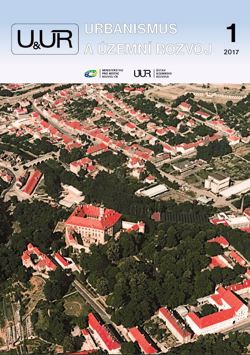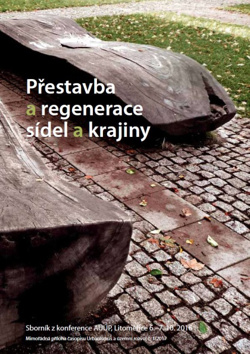

Identification of social housing needs in Czech municipalities, by Martina Mikeszová & Irena Boumová
This article is focused on quantification of social housing needs in case of a failure of in the housing market in municipalities of the Czech Republic. Possible public sources of data useful for the quantification of risks of such failure are identified and a methodology for monitoring the risks of social housing needs in all Czech municipalitites is presented as based on available data. The resulting total indicator of market failure in housing refers to the situation in municipalities and makes it possible to make comparisons and follow development over time. The objective of the methodology is not to analyse market failure or its reasons in detail but to identify municipalities with a higher risk of unaccessibility to housing and describe some major problems that may appear in this respect.
Spatial planning tools based on the conditionality of the right to build and their use in European countries, by Eliška Vejchodská
As developable and undevelopable areas are defined by spatial plans, the right to build is granted to selected plots. Considerable financial values are generated by the definition of new developable areas or higher levels of land use. If all the profit goes to landowners, the public sector is deprived of a huge opportunity to fulfil its interests in the territory. For this reason, the trend today is for rent capture and redirection of a larger or smaller part of the rent from landowners to the public sector. This article presents various tools based on the conditionality of the right to build.
High Line: Smart design in the context of sustainable development, by Jiří Palacký, Michal Krištof and Šárka Kubínová
In 2003, an ideological tender for a new use of the High Line was announced by an organization called Friends of the High Line. At that time it had not yet been decided that the target solution would be a park, although a public space of this kind was needed in such a highly developed and densely populated part of the city. There was a reasonable supposition that its operation could be financed by contributions from the local community. The basic idea behind the design of the High Line park was that its authenticity should be preserved. The central motif of a garden originated thanks to the discovery of naturally growing plants on the construction. Today the High Line has the identity of a territory, stimulates economic development and attracts young people. At the same time, it is a space where local inhabitants can relax. In terms of the environment, the park contributes to a better microclimate, increases biodiversity and facilitates social contact among users. The High Line park also provides unique urban panoramas. Such a solution could be materialized under specific urban conditions only. An interview on these subjects was conducted with James Corner, designer of the landscape solution of the High Line on 3 November 2015 in the James Corner Field Operations studio on 10th Avenue (between 36th and 37th Streets) in New York’s Hell’s Kitchen quarter.
Urban planning – Czech Republic in the European context, by Wolfgang Lunardon
Real estate is relevant in a domestic economy because 70–90 % of the tangible assets are tied in real estate. Real estate is also a distinct asset class which is different to those for standard goods and financial assets because of its dual nature of commodity and investment asset at the same moment. Real estate is specific due their durability, their fixation to a specific location and heterogeneity, their aspects regarding the surroundings, the architecture and functionality, the income related to the lease, the expenses related to the operations, the residual value and the existence of a secondary market. Real estate markets are segmented and predominantly influenced by national and local factors. Global parameters, particularly the availability and the conditions for financing play also a significant role. A fundamental domestic factor for real estate is the planning framework because it determines (among other things) the supply of premises. The topic “Urban Planning – Czech Republic in the European context” is sensitive in many aspects, particularly if a foreigner residing in the Czech Republic comments. The findings are not meant as a criticism; opposite the statements are observations based on many years executing real estate business in the Czech Republic and many other countries.
Hamburg Altona: Planning of large development projects in Germany, by Vít Řezáč
Well-founded requirements for today's urban planning state that cities must stop expanding into the surrounding landscape and only the areas that have already been built-up should be used for new development projects. Nevertheless, if we look at the real situation in our cities and the ability to use brownfields in the last quarter of a century, positive examples are hard to find in places such as Prague, where the real estate market is strong. Besides hesitation about common development objectives for certain territories, there is a lot of groping in the process of harmonizing public and private interests. The example from abroad of the development of the former freight railway station in Hamburg’s Altona quarter shows that such problems can be solved if suitable tools and procedures are available. In combination with the Federal Building Act, not least its provisions on development areas, the financial power and readiness of municipalities in case of forced purchase of plots, they accelerate the difficult process of negotiations between municipalities and real estate owners. For explanation, as a Hanseatic city Hamburg does not have its own Federal State Building Act but only a Building Order, while the other states, excluding Berlin and Bremen, use Building Acts applicable to planning at the level of Federal States or regions.